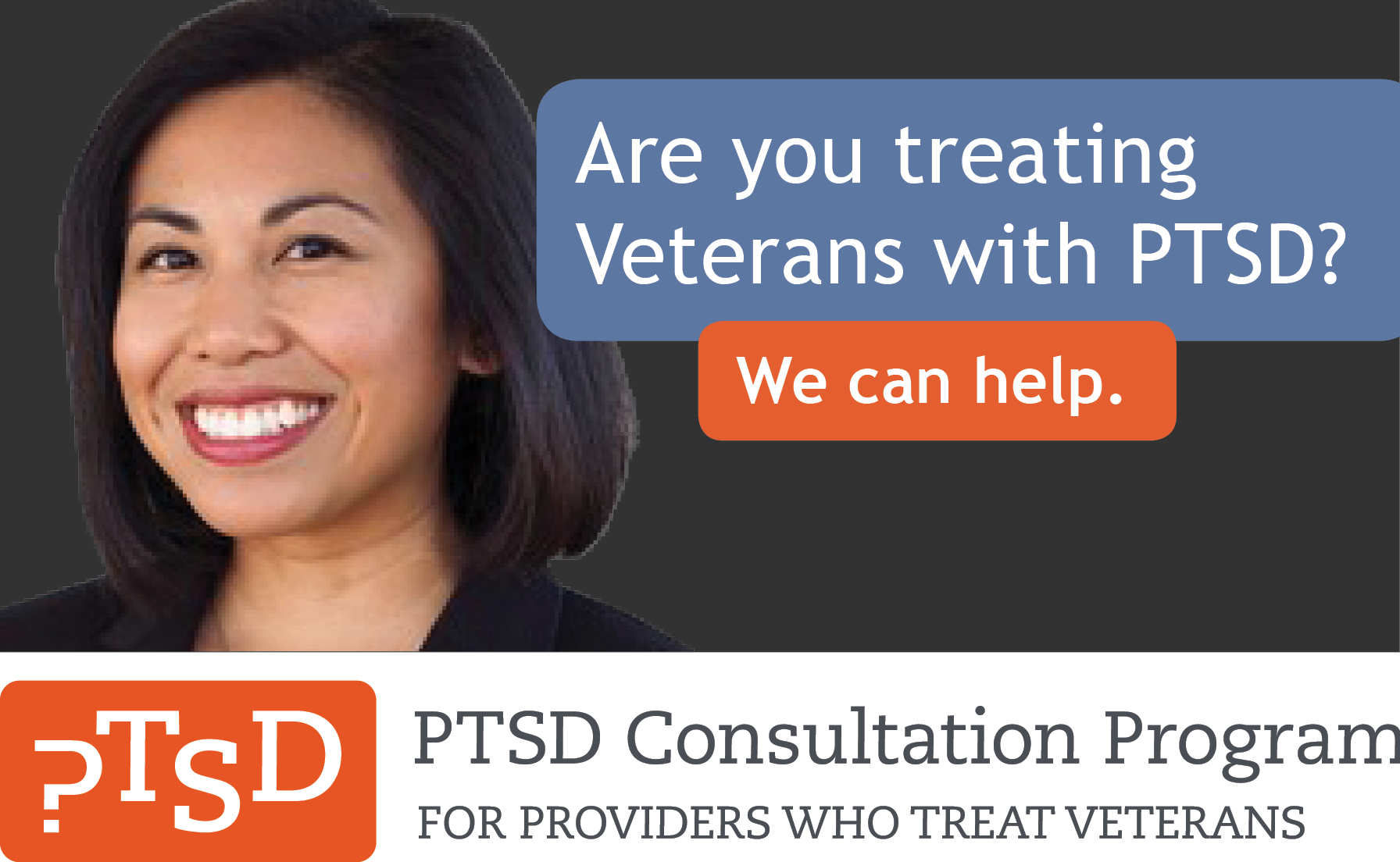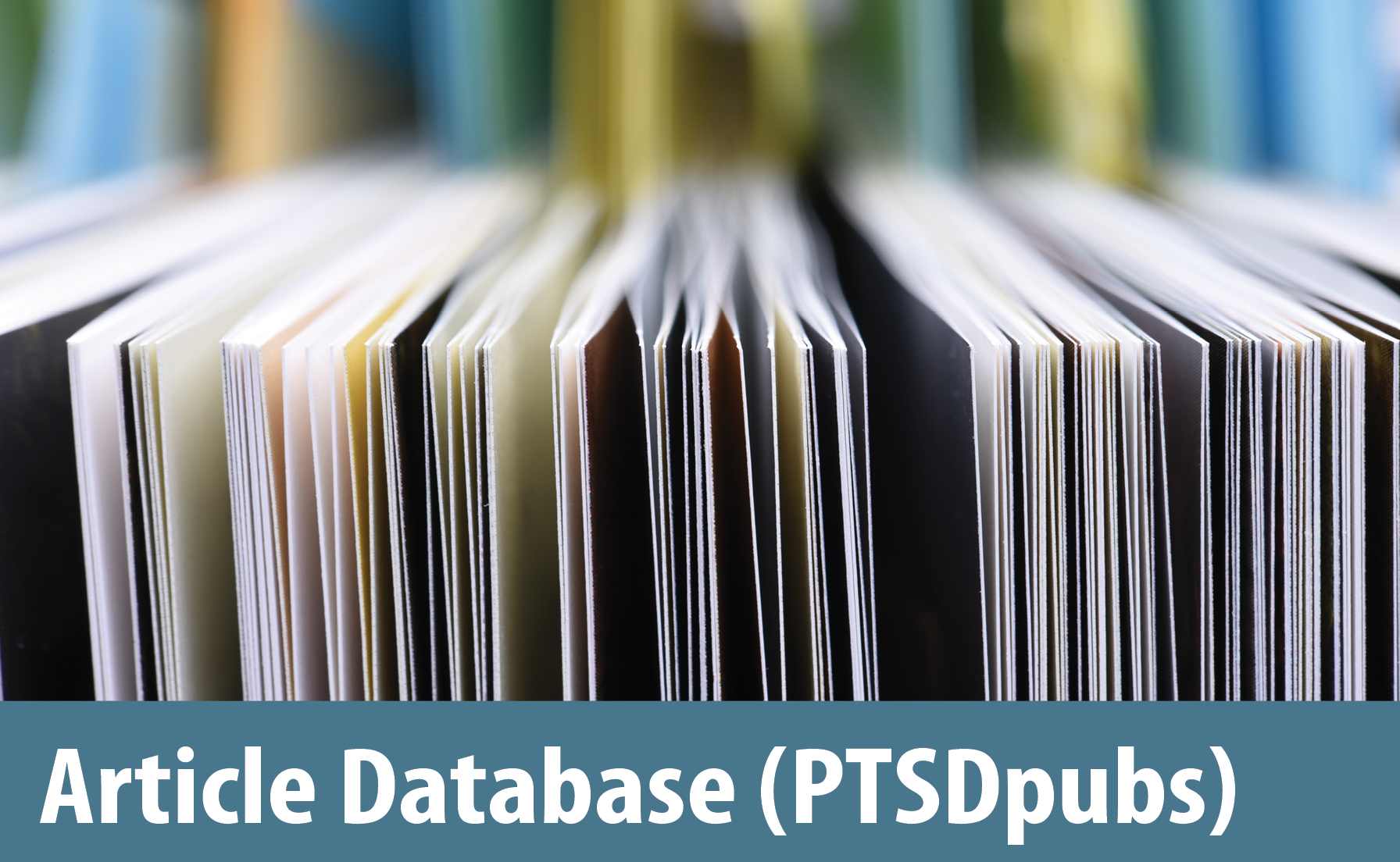PTSD: National Center for PTSD
For Mental Health Providers: Working with People Affected by Disaster Events
For Mental Health Providers: Working with People Affected by Disaster Events
A range of challenges for people in your care may be present after disaster events, which can be natural or human-caused disasters, mass violence events, and public health emergencies like disease outbreaks, chemical spills, or radiation emergencies. Common challenges after disaster events are (1):
- Anxiety
- Distress associated with injury, illness, or loss
- Grief for those who may have lost a loved one
- Loss of income, housing instability, and food insecurity
- Childcare issues
- In the case of disease outbreaks, social distancing and/or quarantine to prevent the spread of infection
- Changes in social support and socializing
There are many ways that these challenges might affect people with existing mental health issues. For instance (2):
- Disaster event have been associated with posttraumatic stress symptoms, avoidance behaviors, frustration, and anger.
- Financial loss has also been shown to result in serious distress and risk for negative psychological symptoms such as anger and anxiety. Having to depend on families for financial support has been shown to be particularly difficult. It is a risk factor for conflict, PTSD, and depression.
You can help mitigate risk for people in your care by:
- Checking in with them regularly
- Providing accurate and up-to-date information related to the event
- Empathizing with stress reactions
- Fostering their ability to cope with distress
- Conveying that they can take meaningful steps to manage their stress reactions
How to Talk About Disaster Events
Mental health providers are well trained to help people manage their distress. Here are some additional suggestions for providing care in the context of disaster events:
- Stay informed regarding the disaster event so that you have the most up-to-date, reliable information to share.
- Begin by addressing the current context and tailor treatment to the person's specific context and stress reactions at each contact. By taking a person-centered approach, you can avoid making assumptions about how the person is reacting. For instance, people who are inclined to take preventive measures may feel validated and resilient, whereas others may experience negative reactions based on a variety of perceived stressors, such as:
- Disagreement with recommended or imposed limitations on their activities
- Insufficient financial, physical, or emotional resources for preparedness efforts
- Potential reminders of past traumas or losses
- Extended restriction of work, leisure, or social activities
- Loss of health, income, resources, family or friends, or normal routines
- Tailoring your comments to the person's specific reactions may help them feel validated and understood, which could increase motivation and sense of control. Here is some suggested language, with prompts for specific circumstances:
- "Before we get started today, I just want to check in with you to see how you are doing [in the current context of the event]; [since we spoke last]. What are the biggest stressors for you right now? What is helping you to cope with the current situation?"
- If you are using a manualized protocol, you may need to ask the people in your care about their preferences and priorities, to determine how to proceed. You may choose to move forward with the existing course of treatment, modify or adapt it in some way, or take a break from prior presenting complaint(s) and focus on the current context. You might say:
- "Given what you just told me, let's talk about what makes the most sense for you right now. We could stay focused on our current course of treatment or stop the treatment for a bit and focus fully on helping you manage the reactions you are having now related to [the disaster event]. I don't want us to lose the progress we have been making, but I also want to make sure I am helping you in the best ways that I can. We could also just take a break for a session or two to focus on new skills that you could use and then come back to the specific treatment. What do you think might be most helpful?"
- You can offer strategies to manage current stress reactions. For example:
- "It sounds like you would like some help managing your current stress reactions. We can definitely do that. There are many things we can try. Let's spend the next [number of] session(s) applying the skills you already have that might be useful and practicing some new skills as well."
- You may also be affected by the event and may be facing the same challenges as people with whom you are working. While it is necessary to maintain appropriate clinical boundaries, limited acknowledgement of this shared experience may be appropriate. At the same time be careful not to assume that the people you are working with are having the same reactions to the situation that you are. Some suggested language is:
- "This is a really hard time for a lot of people right now, how are you doing?"
- "It's taken some time to figure out how to work in these circumstances, but as the days go by, I am figuring it out. What challenges are you facing?"
- "I also find that there are times when I get anxious thinking about the future. When this happens, I remind myself .... I try to .... Let's talk about what might be most helpful for you."
Considerations About How to Modify Treatments
If you decide to move forward with an existing treatment mode, consider discussing potential modifications that map more closely onto your patients' current challenges (3). These modifications will be very specific to individual treatments. For example, in the context of providing Prolonged Exposure during a pandemic, you would not recommend that someone expose themselves to crowds when the Centers for Disease Control and Prevention (CDC) is recommending social distancing. This would be a great time to network with colleagues and see how they are adapting treatments.
The Skills for Psychological Recovery Field Operations Guide offers additional strategies for teaching simple disaster-related coping skills that have been found to be related to better recovery from adverse events. It may also be appropriate to spend some time discussing how the skills the person has been learning in their existing treatment can be helpful in managing their reactions. For instance, you might say:
"Let's take some time to apply the strategies we've been practicing to your reactions related to the what's going on now."
The rest of the session could be devoted to using an existing model to help develop skills to manage both prior and current challenges by brainstorming ways to apply those skills to their current situation and then proceeding with the treatment protocol.
A Framework to Help Manage Reactions
There are 5 evidence-informed elements that have been shown to be related to better outcomes in situations of ongoing threat: increased sense of safety, calming, connectedness, self-efficacy, and hope (3). It is not necessary to have all elements in place, but implementing some of them may help patients deal with their stress. You can use the 5 elements framework to determine whether the person's current life conditions have had an impact on each of these elements. You can also ask about their preferred strategies for using the elements to improve current conditions. Here are some ways providers can help:
- Increasing sense of safety. Finding ways to increase sense of safety can moderate biological reactions that create panicky feelings and make it hard to function. Help people increase their sense of safety by sharing trusted information and resources on how they can protect their health and well-being. Help them prepare for a range of possible scenarios.
- Cultivating ways to calm oneself. In the face of a disaster, mass violence event, or public health emergency, calming is particularly important. Remaining overly anxious or grief-stricken can interfere with making decisions and taking care of oneself and others. Successful calming strategies may vary from one person to another. Here are some options you can suggest:
- Calming actions such as breathing exercises, meditation, exercise, stretching, yoga, prayer, music, writing in a journal, or spending time outdoors.
- Engaging in satisfying or rewarding activities.
- Reduction of unhelpful strategies which seem to help in the short term but can make things worse in the long term. This includes exclusive reliance on alcohol to relax or excessive exposure to the news, particularly prior to sleep.
- Practice helpful, less extreme ways of thinking, with the goal of modifying thoughts so that they are both realistic (i.e., "bad things might happen" rather than "bad things will happen") and helpful (adding to the thought, "but if they do, I can handle it with help.") For more information about how to help someone choose more helpful thoughts, see the Skills for Psychological Recovery Field Operations Guide.
- Staying connected with others as much as possible. Social support has been found to be a strong protective factor in adverse life situations. Help people in your care increase their social support by suggesting flexible, creative, and feasible ways to access support, whether by community events, rebuilding activities, phone, email, text messaging, or video calls. At the same time, if tensions arise because of the need to shelter in place for long periods, as in a pandemic, conflict resolution principles may also be helpful.
- Improving sense of self-efficacy. Self-efficacy is a feeling that one has the skills or resources to get through difficult times. In the context of a disaster event, help people enhance self-efficacy by suggesting they seek out mentoring or information to help make decisions and take actions, revise priorities and expectations, make concreate plans to mitigate stress reactions, and set achievable goals. Specific to a public health emergency - such as a disease outbreak, chemical spill, or radiation emergency—encourage people to learn about the most common early warning signs of serious illness that require medical care.
- Remaining hopeful. Hope has been defined by researchers as the expectation that things can work out, optimism about some aspect of the situation, or a connection with something greater than oneself. It is related to improved outcomes in extended threatening situations. Help people be more hopeful by reminding them to keep a long-term perspective while remaining focused on the present and the positive actions they can take in the moment. Paying attention to what inspires or increases gratitude has also been linked to better outcomes, as does making time for engaging in actions that support personal values, faith, or spirituality.
References
- Ruzek, J. I., Walser, R. D., Naugle, A. E., Litz, B., Mennin, D. S., Polusny, M. A., Ronell, D. M., Ruggiero, K. J., Yehuda, R., &Scotti, J. R. (2008). Cognitive-behavioral psychology: Implications for disaster and terrorism response. Prehospital and Disaster Medicine, 23(5), 397-410. https://doi.org/10.1017/S1049023X00006130
- Berkowitz, S., Bryant, R., Brymer, M., Hamblen, J., Jacobs, A., Layne, C., &Watson, P. (2010). Skills for Psychological Recovery: Field operations guide. National Center for PTSD &the National Child Traumatic Stress Network. Available on www.nctsn.org and www.ptsd.va.gov
- Hobfoll, S. E., Watson, P. J., Bell, C. C., Bryant, R. A., Brymer, M. J., Friedman, M. J., Friedman, M., Gersons, B. P. R., de Jong, J. T. V. M., Layne, C. M., Maguen, S., Neria, Y., Norwood, A. E., Pynoos, R. S., Reissman, D., Ruzek, J. I., Shalev, A. Y., Solomon, Z., Seinberg, M., &Ursano, R. J. (2007). Five essential elements of immediate and mid-term mass trauma intervention: Empirical evidence. Psychiatry, 70(4), 283-315. https://doi.org/10.1521/psyc.2007.70.4.283
You May Also Be Interested In

Continuing Education Online Courses
Learn from expert researchers and earn free Continuing Education (CE) credits.

























